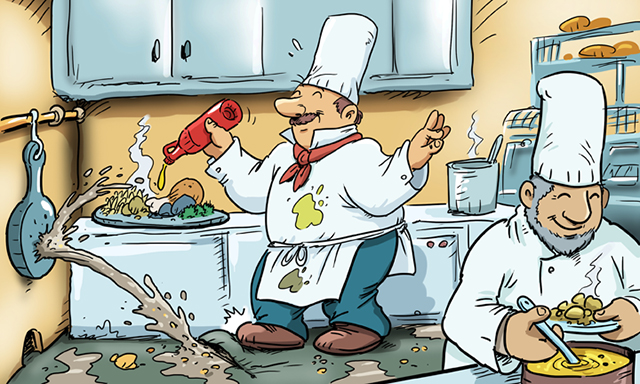
Sheet Floors such as rubber flooring , PVC, and vinyl with heat-welded seams should never be used in a restaurant kitchen.
Rubber Flooring is a non-porous and very durable substance. But rubber does not adhere to concrete. How rubber flooring works is rubber is bought in sheets, spread out over the floor, and cut to fit at the edges, drains, and mechanical protrusions. It is then glued to the floor and the seams are heat welded together.
The intended outcome is a continuous seamless sheet of rubber over the entire floor. Although this is an excellent concept, it does not always work well. Eventually wear and continuous hot grease, dropped cutlery, etc. will cause a seam to come apart or cause the rubber flooring to become loose near a drain. Also, when this rubber floor is not perfectly installed there could be edges exposed near drains and other mechanical protrusions and seams not properly welded, now you have a non-porous continuous floor with holes in it.
Water and food particles get under the rubber flooring and begin to break up the adhesive that is supposed to glue the rubber to the concrete. This adhesive is usually a plastic glue similar to pvc which, once exposed to water and grease, starts to lose its grip on the floor. Now there is a perfect breeding ground for bacteria in the dark moist area between the rubber flooring and the concrete. It cannot fully escape and just gets worse. When a heavy object is dropped or someone steps near a crack some of the mess under the floor squirts out much like stepping on a ketchup packet.
For a floor that is built to take the abuse of a restaurant kitchen go to Everlast Epoxy Flooring or call (800) 708-9870.
